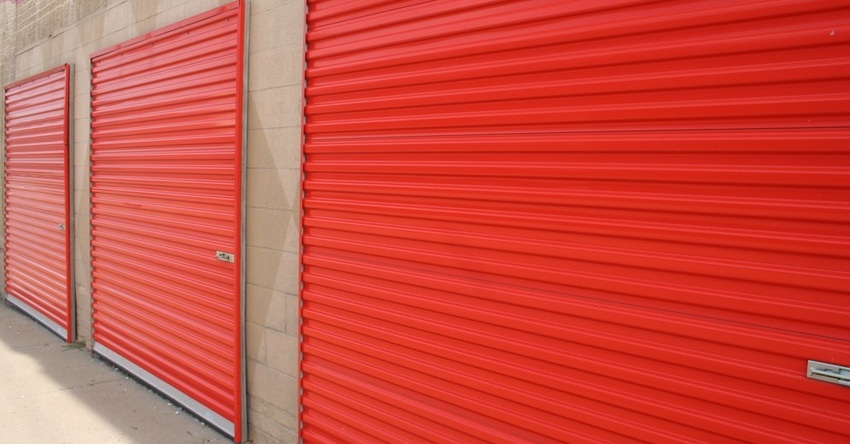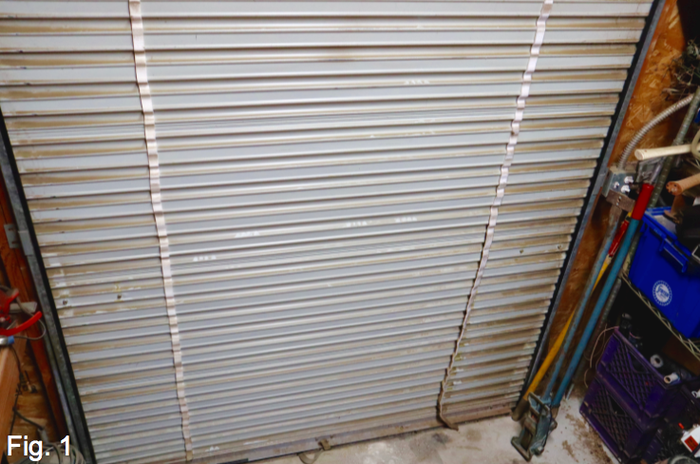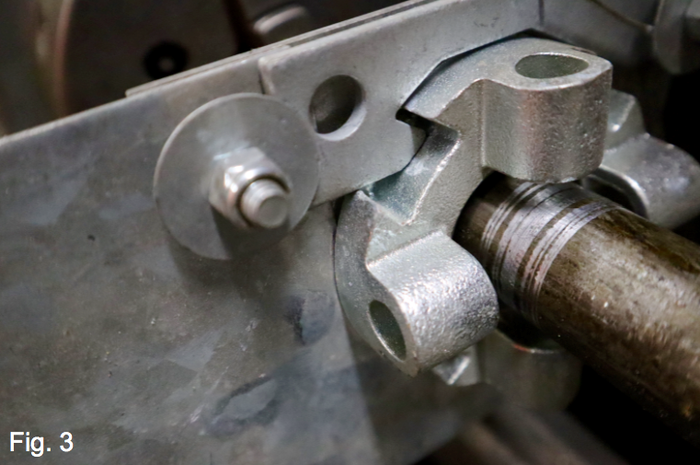The key to self-storage door maintenance is prevention. Consider the following to keep the exterior and mechanics of your unit doors in top shape.

The key to self-storage door maintenance is prevention. Site managers who stop damage before it happens will help sustain a facility’s curb appeal and the quality of their property. Consider the following to keep the exterior and mechanics of your unit doors in top shape. Plus, find out when it’s best to let a professional make repairs.
Cleaning
First, you need to think outside the box—literally. Proper door service starts outside the roll-up door. Most paint damage comes from dirt kicked up from cars and driveways. Storage facilities in high-traffic locations, or on major roadways, expressways or freeways are more susceptible to the higher loads of dust and grime.
Avoid using a blower to clean driveways and doorways, as it forces dirt onto door surfaces and could even push it into the units. For example, it’s clear in the following image that a blower was used by all the dirt on the door ridges.

Take a moment on your next facility walk-through to look at the base of your door guides to determine if you have a dirt problem. If so, there’ll be piling inside the guide, as shown in the image below. If this is what you see, you need a street-sweeping program. Look for a company that specializes in self-storage maintenance and request vacuum service only. Again, you want to eliminate the use of blowers at your site. A blower just throws debris into the air, while a vacuum removes it.

When a tenant vacates a unit, it’s the perfect opportunity to clean the door, inside and out. Using a Shop-Vac, sweep the inside of the door curtain with the vacuum brush to remove all loose debris, and then vacuum the felt strips to remove all dust.
You may even want to wash the door, particularly if you’re in a dusty area or someone has been using a blower on your site. To do so, you’ll need a bucket or hose for water, dish soap, a very loose long-bristle brush, rags or sponges, and patience. Start from the inside, with the door open 24 inches off the ground, and clean the top of the door coil that contains the springs. Next, close the door completely and wash from the axel to the ground. Apply moderate water pressure to your felt strips to force out all dust. Step outside the unit and repeat, top to bottom. Leave the door in the closed position for proper drying.
If you’re cleaning with an eye toward restoring the door finish, it’s important to wash the inside of the door before you start. Check with your coating supplier as to the proper cleaning products for your choice of finish.
Inspections and Minor Repairs
Once the unit has been washed, cleaned and dried, it’s time for an inspection. Look at the door mechanics: felt strips, springs, axles, guides, mounting plates, fasteners and the bottom seal.
First, check to ensure the felt strip is still attached to the inside of the curtain. Reattach it if you find it loose, or replace it if it’s missing. Order a roll ahead of time so you have it on hand, and use 3M Super 77 Spray Glue. The felt strip is important to keep doors in mint condition and maintain curb appeal.
Next, perform the following:
Use a spray silicone lubrication and lightly coat the springs. Rusty springs lead to friction and drag, causing door chatter.
Use a Q-Tip to force a pea-sized amount of grease at each axle pivot location, and inspect the axle for galling and abrasion. This will look like a shining ridge or divot going around the axel surface (see the image below).
Check to see if the nylon guide strips are in place. If they’re missing, install new ones, as these are important for proper door function.
Wipe guides from top to bottom to remove grease and debris. You should never lubricate door guides! Clean guides will maintain a clean door.
Apply a small amount of dry silicone spray to the latching mechanism.
Inspect the curtain for minor dents that can be removed with a three-quarter-inch, plastic, electric, ninety-degree sweep and small hammer. This will keep doors from cracking.
The door should now operate in tip-top condition. If you don’t feel comfortable performing these tasks, arrange for a training program from a repair company that specializes in roll-up doors.

When to Call a Pro
If you find inconsistencies in your door components such as scrapes, bending, tears or broken springs, a professional door company needs to step in, as there are hidden energies in rolling-door components. For example, springs carry hundreds of pounds of energy to assist the customer with raising or opening the door. If the spring isn’t broken, it’s under tension.
To identify a broken spring, look for inconsistent spacing between the coils. Never touch a door spring or remove any spring or head-plate fasteners. It’s very dangerous. Not being educated in this type of repair could cause injury or death. In-house spring repairs by an unlicensed door technician create liability exposure for the facility owner, whereas using a licensed, bonded and trained door company adds coverage. Remember, most of this work occurs on a ladder, creating additional risk of injury.
A professional door technician will be able to supply various spring sizes to meet your needs. If not, keep an inventory of springs at your facility to be ready for door repairs.
After looking at the springs, check head-plate mounting fasteners to ensure the plates are securely attached to the wall. If not, again, it’s time to call a pro.
If you don’t know who to call, do some research. Contact your door manufacturer to see if it has a local technician or installer-referral program. If you have a good relationship with other storage operators in the area, ask who performs their repairs. Hiring a local company can help keep down service costs. Commercial door companies are willing to do repairs, but they find it a hassle and often charge a small fortune.
Remember, happy self-storage doors make for happy customers and facility owners. Follow the above advice to keep your doors clean and working properly.
Mark Pickard is the CEO of Keepster Protection, developer of the Keepster Pro, a device for self-storage unit doors that provides a safeguard for latch, header and door protection. Mark has worked in the self-storage industry for 35 years, and currently operates a maintenance company representing 300-plus facilities in Southern California. For more information, call 951.206.4831; visit www.keepsterpro.com.
About the Author(s)
You May Also Like





